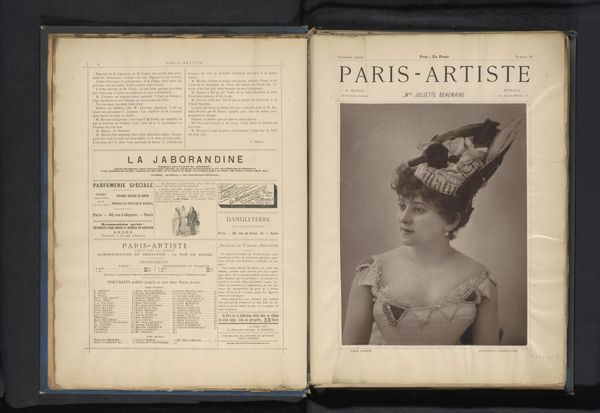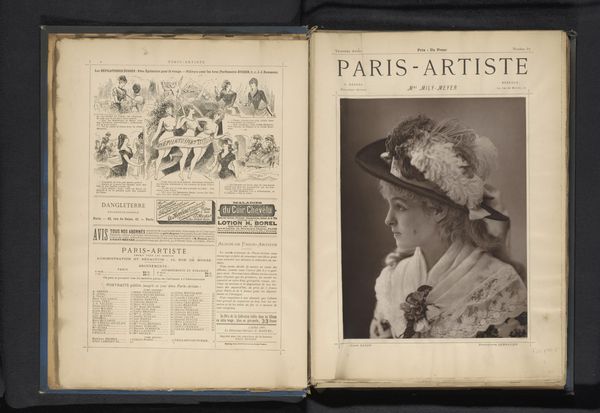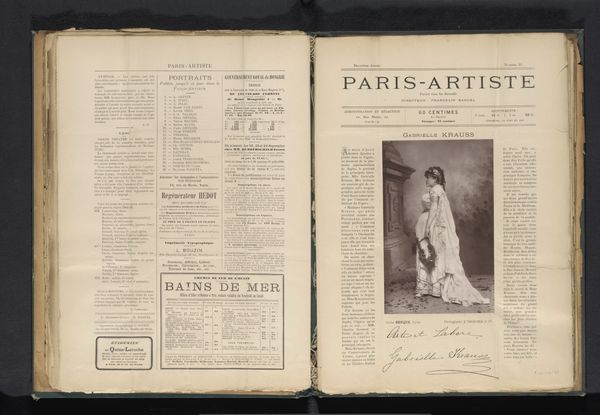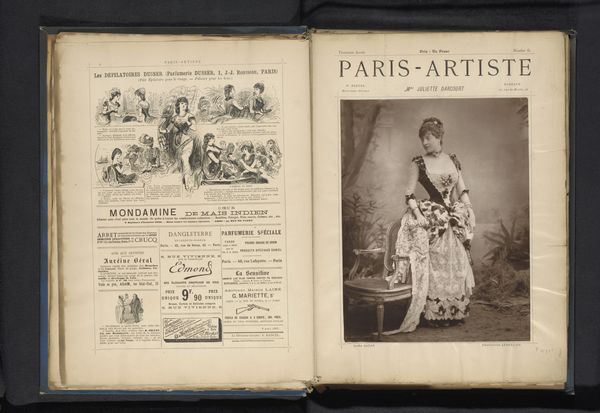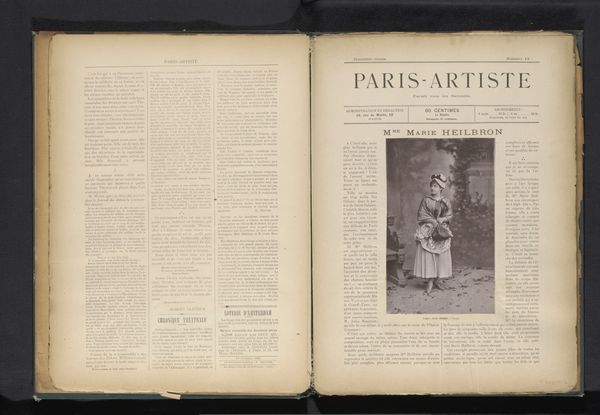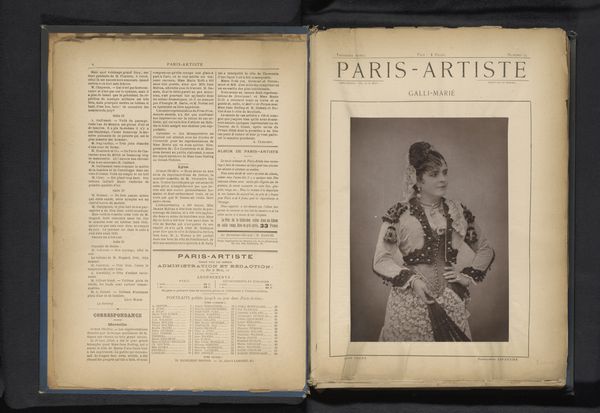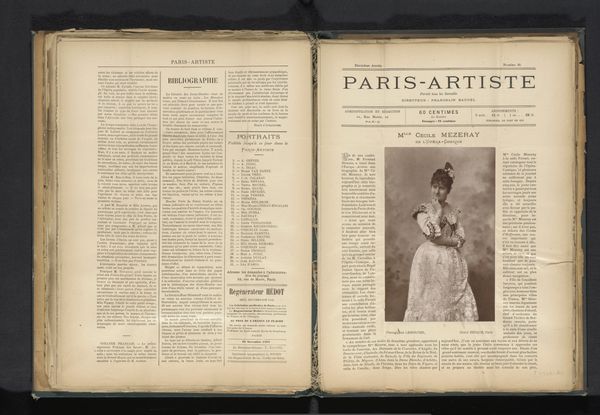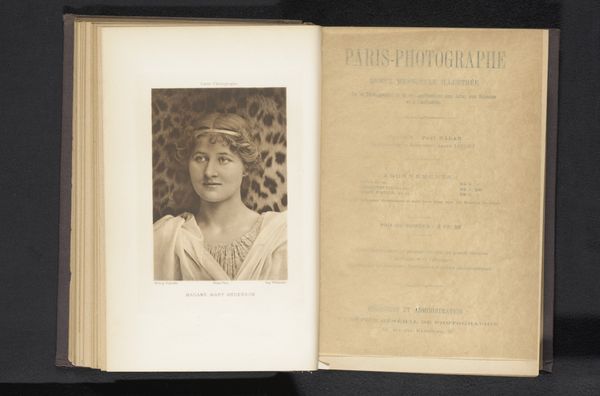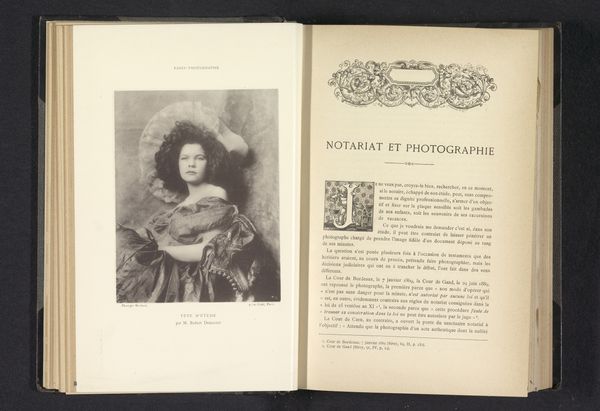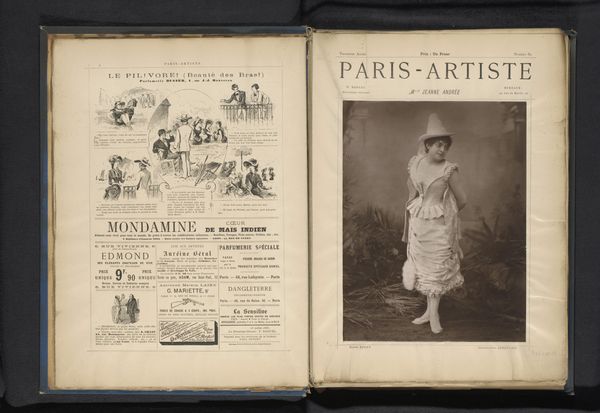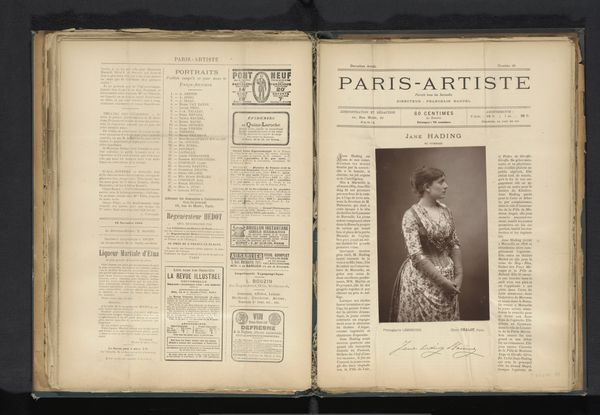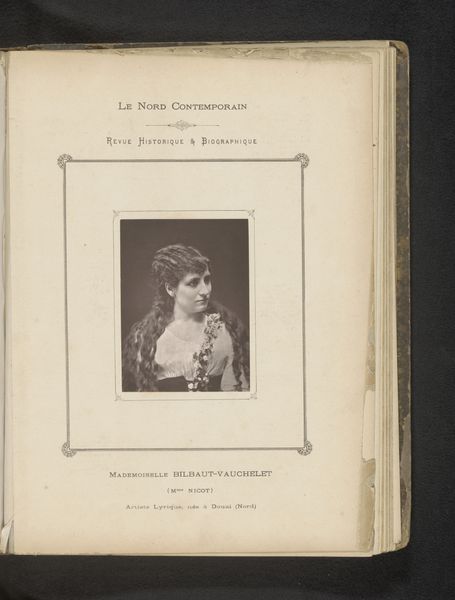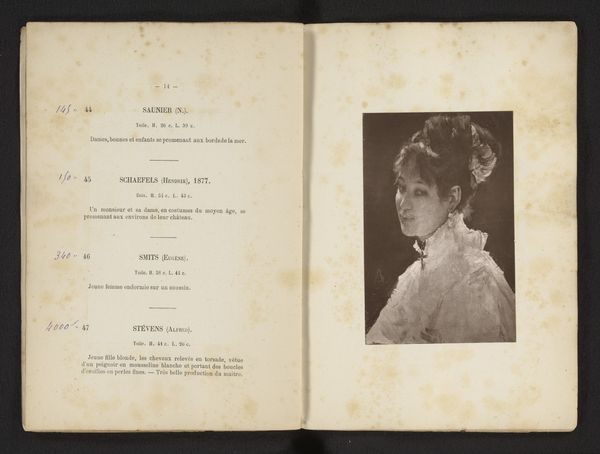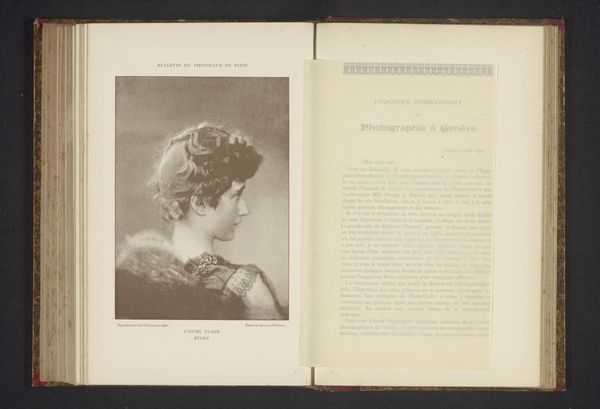
Dimensions: height 157 mm, width 112 mm
Copyright: Rijks Museum: Open Domain
Curator: Nadar’s photographic portrait of Armande Cassive, likely taken before 1893, has a luminous quality despite its gelatin-silver print medium. Editor: My first impression is one of poised dignity. There’s a formality in the composition, but the softness of the light hints at a more intimate and psychological depth. Curator: Precisely. Nadar, beyond his technical mastery, seemed fascinated by capturing the sitter’s inner life through carefully controlled poses and light. Note how her gaze is directed slightly upwards, suggesting contemplation. The symbols of wealth, like her pearl necklace, do more to portray her status than distract. Editor: Considering the social constraints of the period, it's difficult not to wonder about the performance aspect here. Nadar was capturing her as she wanted to be seen. Do we see her strength and presence, or the visual language that signals bourgeois identity and wealth? The intersection of femininity and power is palpable. Curator: The fur stole, in particular, is a recurring motif in depictions of women during this era—a signifier of beauty and refinement. But I also think of it as protective armor. Does the portrait invite or create psychological distance? Editor: Interesting point. To me, this invokes questions about representation itself: the very act of portraiture has long been entwined with power dynamics, hasn’t it? It's essential to consider Nadar's own position as a celebrated photographer in 19th-century Parisian society. Whose story are we really seeing? Curator: But ultimately, is it also the start of democratization and who has a seat at the table? Prior, only the elite class had the resources and wealth to commission their own painted portraits. Here, Nadar has broadened access, both creatively and in practical terms, to have your identity represented. Editor: Absolutely. Viewing it now, I’m left with a deeper appreciation of Nadar’s intention—or perhaps his ambition—to see beyond superficial presentation to something more enduring. Curator: And I see not just one life, but a web of aspirations, societal norms, and unspoken codes of identity communicated to us through visual signifiers that, across time, create ever-expanding dialogues.
Comments
No comments
Be the first to comment and join the conversation on the ultimate creative platform.
